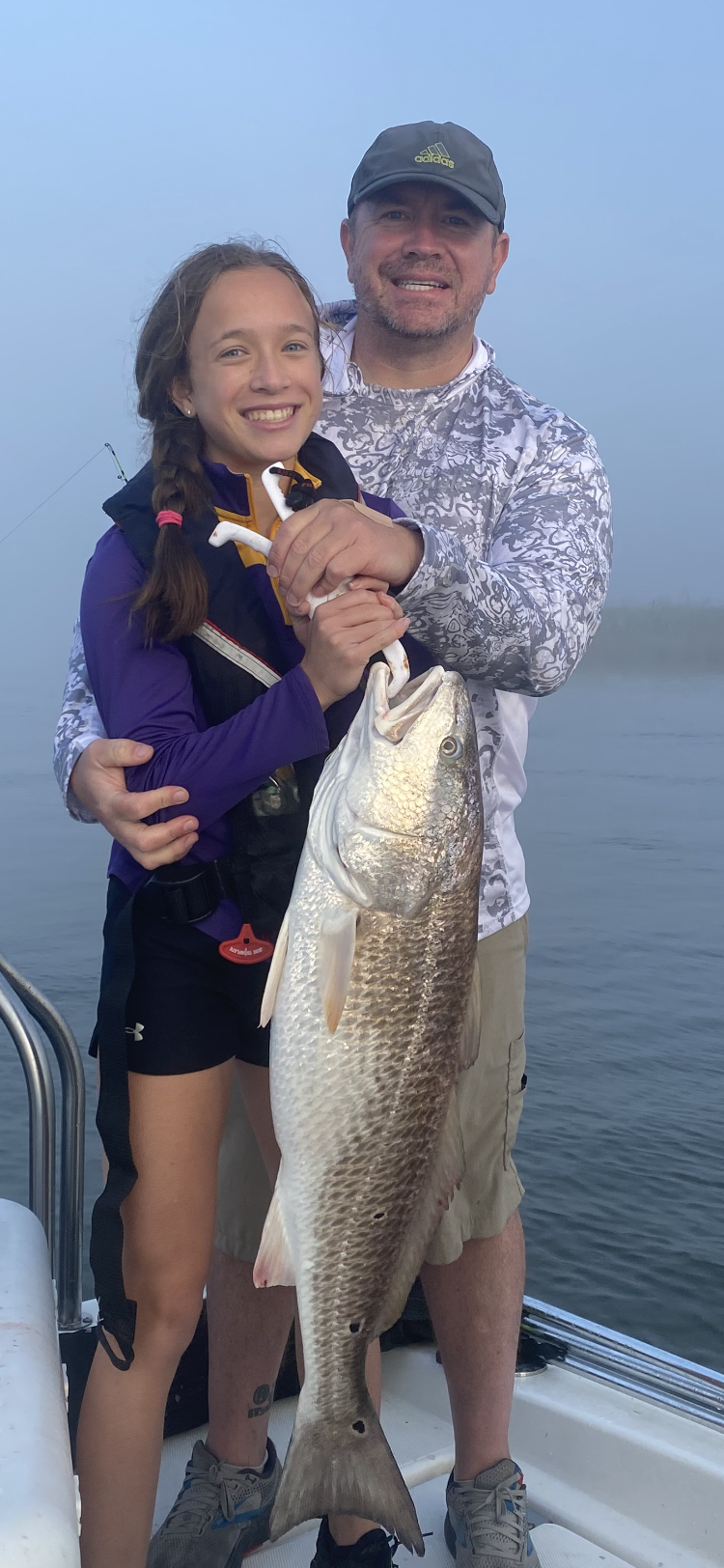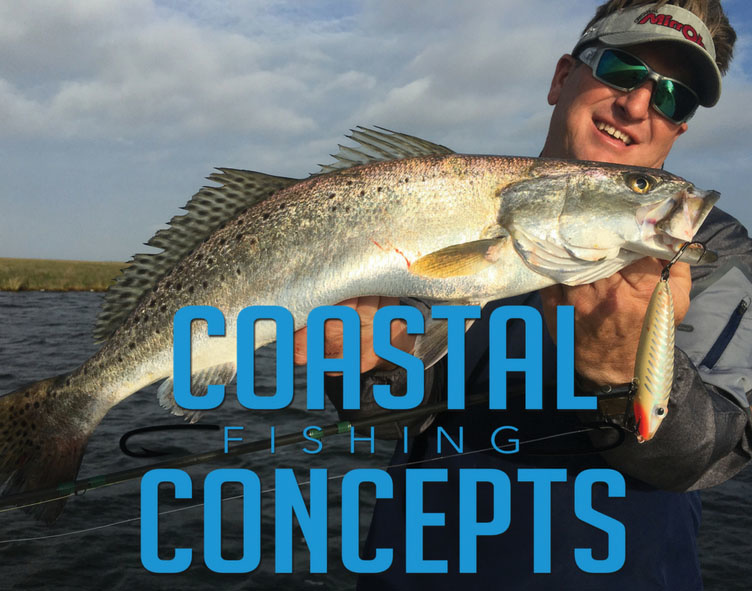by Capt. Charlie Thomason
November is the month many of us look forward to all year as inshore anglers. The weather is always awesome, and the fishing is probably some of the best of the year.
Here in South Louisiana, this is the month that the true cold fronts begin to make their move past our coast, and water temperatures begin to decline and hold steady in the lower 60s and maybe even the 50s! Yes, we begin to transition as anglers, just like the fish from fall to winter in one month. The fish tend to move to the areas they will be in until March. Redfish especially start to move where the mullet and crabs migrate for the winter, and they will stay in that location all winter. Now they may move shallow or deeper due to the fluctuation of water temperatures, but they will stay pretty much in the same area all winter long. So get your rod and reels ready and eat all the fish you’ve had in your freezer all year because it is time for a refill.
With the transition of all bait and predator fish, you, as an angler, need to understand that the fish will be moving fast, and their location can change each and every day. As the shrimp and pogies begin to move out for the winter, the fish will locate themselves at the mouths of major passes and bayous, waiting for these bait species to be pushed out for an easy meal. I like to fish passes where there is a bay or major lake on the up-current side, then a deeper pass in the middle, then a lake or bay at the end where the fish will locate to feed when the water depth shallows from the deep pass. The fish will locate where they have the ability to suspend from 15 feet deep to 3 feet deep to feed on the prey on hand. It really doesn’t matter if you are a speckled trout, redfish, black drum, or sheepshead angler; this location will produce just from the sheer amount of bait that will travel through this area.
Finding the fish can be tricky when looking at these spots, but a few tricks of the trade can help you locate the mother load. The first one is the most obvious, diving seagulls; yep, these birds will be your best friend just at dawn. They will locate the schools of speckled trout so you can literally pull up, start casting and catch fish every cast! The second is slicks on the surface of the water. These “oil slicks” are a great way to locate fish that are feeding and will tend to happen all day long if the fish are actively feeding. Always remember that you need to fish the up-current side of the slick because that will be where the school will be located. Normally these fish will like baits under corks or slowly retrieved drifting with the current. The last will be shrimp boats; yep, if shrimp boats are actively shrimping, then you know that shrimp are in the area, and the fish know this also. I like to find areas of oyster beds or reefs that are along the banks. The fish and bait will hold on these areas.
The above techniques will work best during the first third of the month when water and ambient temperatures fluctuate a bunch. Normally this will be the time of year that fog begins to happen every day, and the gnats start up with a vengeance. Also, I will start using artificial soft plastics more often because finding fish under birds or around slicks they will normally be in schools, and artificial baits just cut down time between casts to bring in more fish.

Kelly & Londyn Guillot of Mandeville, 16lb Redfish caught at the Rigolets
The latter third of the month will tend to begin the stronger fronts that keep temperatures down for longer periods, and the fish will tend to slow down some, and bait will begin to disappear. Colder temperatures will definitely school up all of the predatory fish, and we, as anglers, will have to slow down some and start fishing deeper water where the fish will gather. The redfish will definitely school up in two areas; one will be deeper waters and the other shallow waters.
Haha, I know that anyone can say that, but it is true. Redfish have two types of gangs. Yep, one that loves to stay shallow all year and never leave shallow water because the water temperature can warm up very fast from sunlight but can also get very cold when a hard front passes. Then there are the ones that move to deeper waters and feed in areas that have good current where the feeding can be a little easier, and the bottom is a little warmer from the heat of the Earth.
These fish can be found by locating bait and/or clearer water in shallow waters, the fish will locate themselves around bait, and the clear water will warm up due to the dark bottoms that we have along the coast. I like to throw Versamaxx Corks with dead or live shrimp on a 3/8oz jighead, or if you are an artificial angler, then any crawfish or creature bait on a jighead will work great. Slow down your presentations when fishing these shallow fish. Popping your cork with one hard pop and then letting it sit for 10-20 seconds. Then repeat works best; try to keep the cork from moving forward, and pop your slack in the line, not the actual cork.
The deeper fish will need to be located by some good old hard work; using the electronics on your boat is the best way to find these fish. Normally we have falling tides during the day this month, so finding shallow drains that are pouring out into a deeper main bayou or pass will be your best locations when trying to find these fish. I like to idle an entire bayou that has many drains on it. As I idle and notice fish on my chart, I mark the spot on the GPS and keep searching. After finishing my search, I go back to the first mark and begin to fish the drain area. I normally will fish about 3-5ft under a Versamaxx Cork or live shrimp on a 3/8oz jighead bouncing it down the ledge in front of the mouth of the drain. Most of the time, the fish will tend to be on the down-current side of the drain mouth. Speckled trout will begin to drop to their favorite bottom spots, where the current falls from shallower to deeper waters.
I like to find mouths of bayous where the water runs west to east. The reason for this is that most of the month, when the fronts come through, you want the wind to your back where the water is flowing from a lake into the bayou and having the ability to tuck into the bank and throw up current, allowing the bait to tumble along the bottom with the current naturally. This allows you to have great contact with your bait and will allow you to keep all slack out of your line to feel the most subtle of bites!!
I hope all of you and your families have a wonderful Thanksgiving, and I am thankful for all your support and help throughout the years!
Please make sure to check out my YouTube Channel @Capt Charlie Thomason, I have hours upon hours of videos that will make you a better angler and educate you on the basic principles of inshore fishing.

